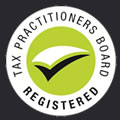4 November 2017
Have you or someone you know considered taking up ride-sharing (also called ride-sourcing) to earn extra income, or even as an alternative form of employment? When providing ride-sharing services through Uber or GoCatch and other facilitators for a fare, there are things you will need to know, and traps you need to be aware of.
The first issue to make plain however depends on if you have already started offering ride-share services without considering the tax outcomes. If this is indeed the case, be pre-warned that come financial year’s end there’s a very real possibility that you may have built up a tax debt. Some drivers can be former salaried workers who don’t always realise how small business works (and may not even realise they are a small business now), and many think of sharing-economy services as “money on the side” without realising that tax rules still apply.
For now, the items that every ride share driver needs to know include:
- Income earned from ride-share activities is assessable income and must be reported in your income tax return.
- Deductions can be claimed for expenses that directly relate to providing ride-share services. This applies even if you operate your ride-share activities on a casual basis to supplement income from another job or other business activities.
- Ride-share services are deemed to be taxi travel for GST purposes, so you will have to register for GST regardless of how much is earned from offering ride-share services. Commercial enterprises are generally only required to register for GST after a $75,000 annual turnover threshold is met. An enterprise in the form of a tax service is an exception to this general rule in that GST registration is required irrespective of turnover.
Taking up ride-sharing also means you will be required to get an Australian business number. Registering for GST can be done at the same time as getting an ABN, and we can help you with both of these.
Ride sourcing and GST
As an Uber driver (let’s use that term for convenience, but there are other ride-sharing facilitators) you will be required to calculate GST on the full fare, not the net amount you receive after deducting any fees or commissions that Uber is entitled to.
If a passenger pays $55 for a fare:
- the GST payable is $5
- Uber pays you $44 after taking out their commission ($11)
- the $11 paid to Uber is a tax deduction you can claim.
Being registered for GST means you can claim GST credits on business purchases, but the percentage that is business use (and not private use, when you are just driving yourself around) must be worked out, and you will be required to only claim this amount.
For example, if you use your car 10% for ride sourcing and 90% for private purposes, and:
- you buy a new car to use for ride-sourcing activities for $33,000 (including $3,000 GST) – you can claim a GST input tax credit relevant to the business portion of the GST cost ($300)
- you pay $110 for fuel (including $10 GST) – you can claim a GST input tax credit relevant to the business portion of the GST cost ($1)
- you pay $220 to have the car serviced (including $20 GST) – you can claim a GST input tax credit relevant to the business portion of the GST cost ($2).
There are other business purchases you may be able to claim a portion of GST credits for, but of course records need to be kept. Activity statements will need to be lodged, but again we can help with this.
The easiest way for an Uber driver to keep track of deductions is by using the ATO app. You can take a photo of receipts and log it in the app, then later on send a report to our office. You could also use the ATO app “Add trip” function as your logbook to keep records. You can use your GPS or odometer to calculate the distance travelled while you’re driving passengers to their destinations to accurately record such trips.
Income deductions allowed or not For income tax deductions, there is the cents per kilometre or logbook methods (we can go over what these mean for you if you’re not familiar), and also note that you can change these methods year to year depending on which is more favourable.
For Uber deductions, it is important to note that the business use proportion is key. Possible deduction inclusions are:
- commissions, licensing or service fees paid to Uber or the other ride-share facilitators
- costs associated with business use of car (petrol, servicing, depreciation, etc.)
- tolls
- parking
- vehicle registration
- mobile phone bills
- safety equipment (such as high visibility vests)
- insurance
- our fee
- bank fees (if you maintain a separate account for ride-share work)
There are however a few non-deductible expenses you need to be aware of. These include:
- costs incurred before becoming a ride-share driver, or before the application process starts (such as attending information nights) are not deductible
- costs of a normal drivers licence
- fines (parking, speeding, etc)
- clothing other than safety clothing
- meals, drinks, etc purchased while on shift.
Issuing invoices If one of your passengers requests a tax invoice (that is, an invoice that includes the amount of GST) for a fare over $82.50 including GST, you are required by law to provide one. Note that the receipts that Uber sends to a passenger’s mobile phone are not valid tax invoices; they are just receipts.
Uber or whichever facilitator you are going through may issue tax invoices on your behalf, which solves the problem (although it’s a good idea to be familiar with the process before a passenger asks for an invoice).
But if they can’t do this on your behalf, you can use your own tax invoice book with your ABN and other required details on it. Talk to us about the sort of details every tax invoice is required to display.




